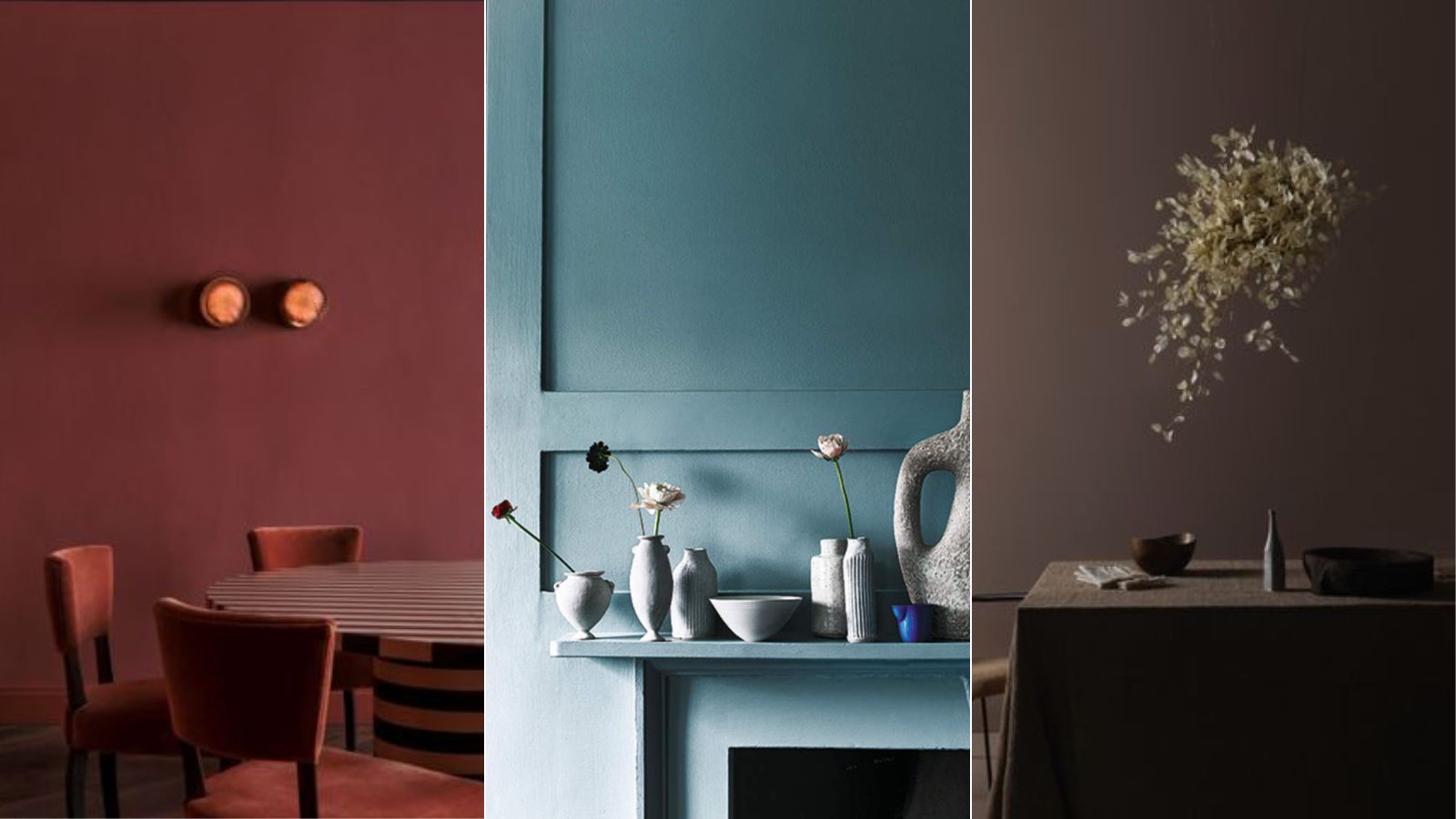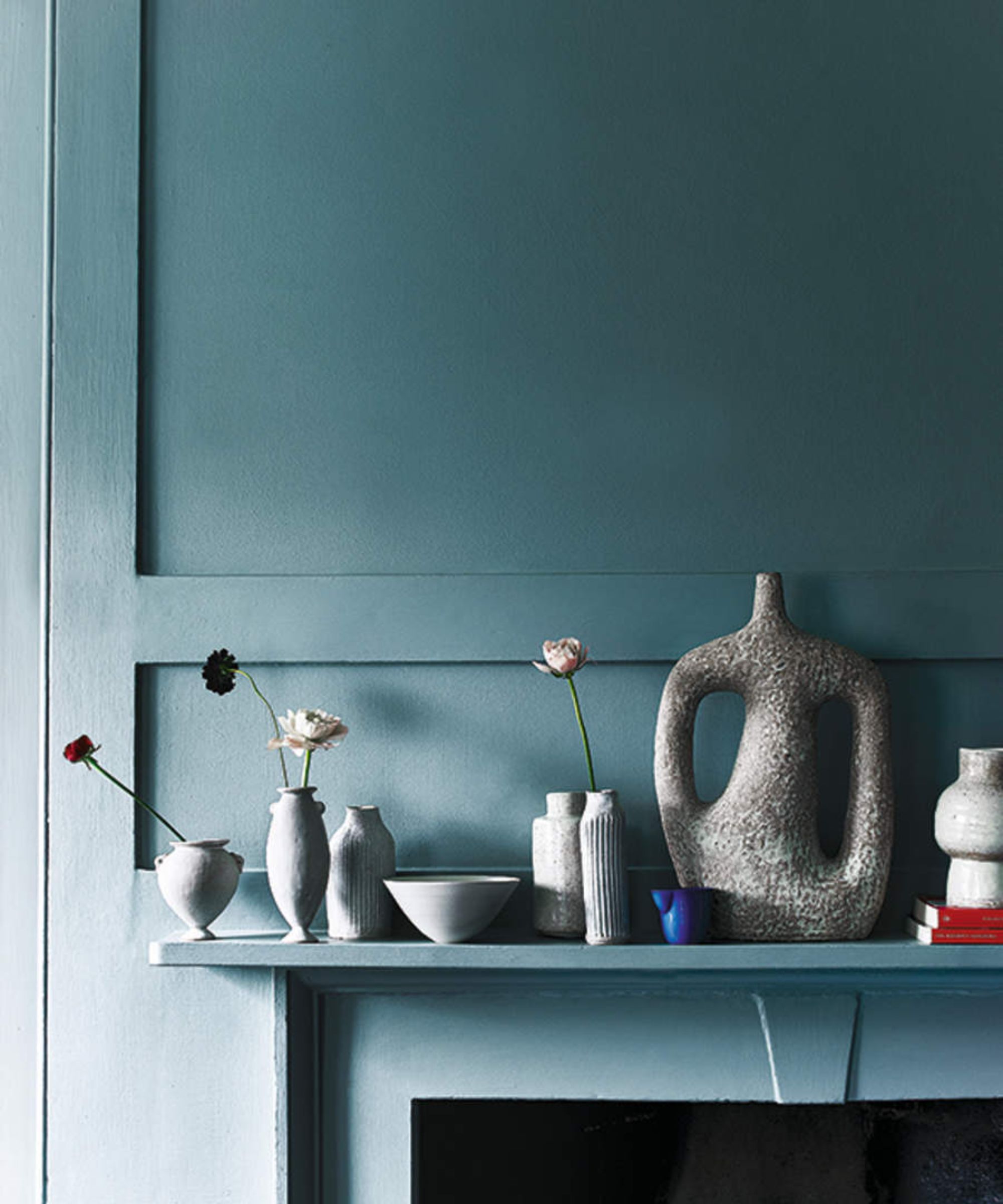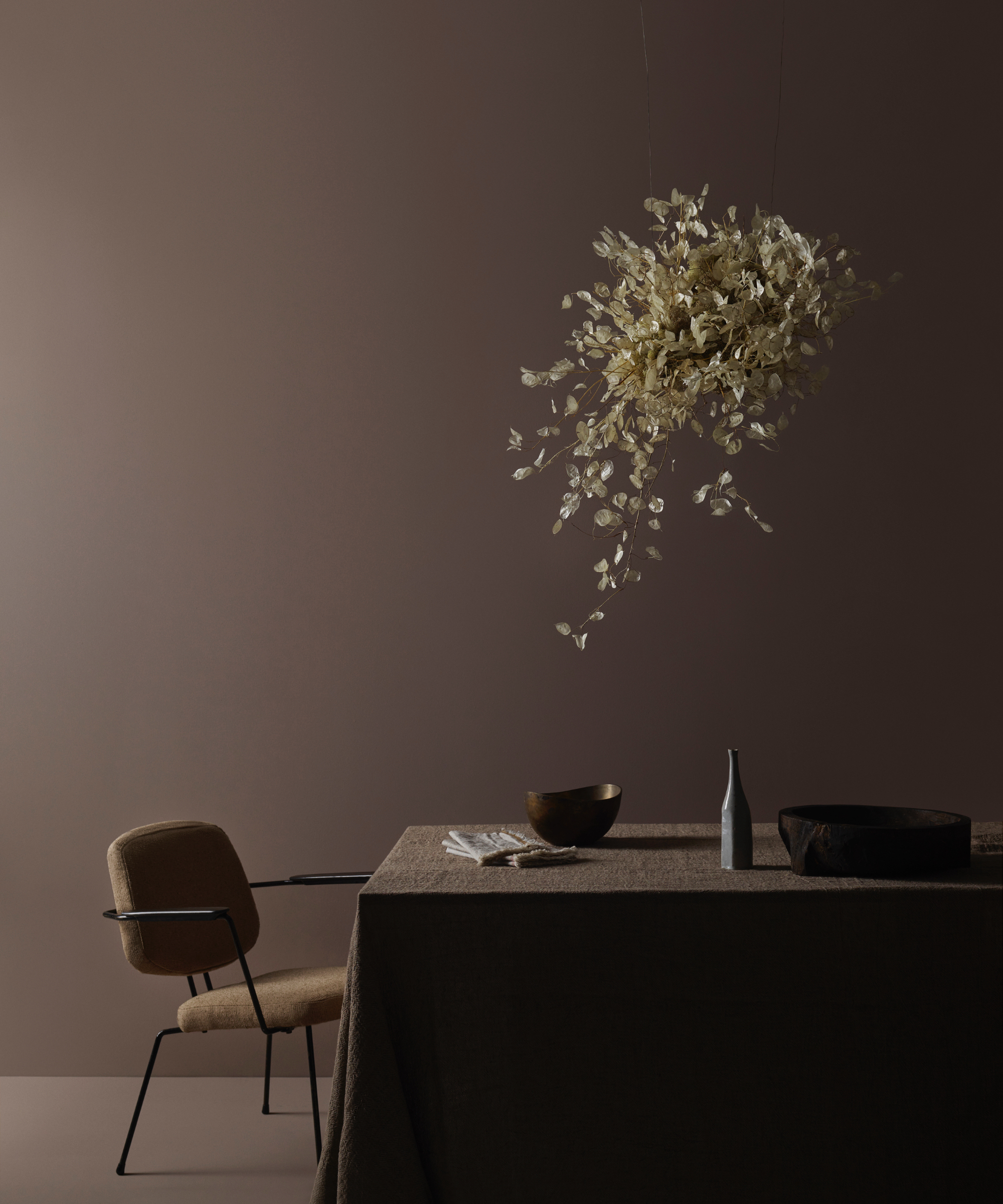Does paint go bad? How to tell if it's expired
Experts explain how, when, and why paint goes bad – and how you can preserve your paint for as long as possible


Have you ever thought about refreshing a wall using that can of paint you've had stashed away but hesitated, wondering if it's still okay to use? The answer lies in how long the paint has been opened and the way it's been stored.
While paint typically has a long shelf life, it's not immune to expiration. Using old paint can compromise the fresh look you're aiming for on your walls. So, before you start painting a room, it's crucial to check the age of your paint and look for signs that it's still in good condition.
Our experts have shared valuable insights on when paint deteriorates, how to spot spoilage, the factors that cause paint to expire, along with handy paint tricks to extend its lifespan. These tips can help you minimize the cost of painting a room, saving both money and unnecessary stress over time.
Does paint go bad?
'It is possible for paint to go bad, and viscosity and odor tend to be the first telltale signs,' explains Dennis Fiorilli, director of product excellence at Sherwin-Williams. 'As paints age, the color can change, the quality or coverage can decrease, and the gloss may fade – along with changes to its viscosity and odor.'
Typical lifespans of different types of paints

'Every type of paint has a shelf life and will go bad after a certain number of years,' says Andre Kazimierski, CEO of Improovy Painters. 'Unopened cans of paint are typically safe to store for as long as ten to fifteen years in some cases, while opened cans (if stored properly) can last an additional two to five years.'
However, the average time a paint will last can depend on the type of paint:
Latex or water-based paints: Water-based and latex paint can last anywhere from two to ten years. It will last longer when stored properly; however, exposure to very high or low temperatures will reduce its quality.
Oil-based paints: These paints generally have a longer lifespan than latex or water-based paints, lasting anywhere between five to fifteen years. You should store these paints with suitable sealing to prevent them from drying out and forming a skin on the surface.
Acrylic paints: Acrylic paints (which are usually used for arts and crafts) have a typical shelf life of around two to five years.
Spray paints: Spray paints have a shorter lifespan than traditional paints and are more susceptible to clogging, and their propellants may lose effectiveness over time. On average, spray paints will go bad after two to five years.
Primers and sealers: Although these are not paints, they play a crucial part in the painting process. The shelf life of primers and sealers can be anywhere between one to ten years, depending on the sealing and their storage.
The lifespan of any paint may vary depending on its quality, storage conditions, and brand. If you are unsure if the paint has gone bad, check for signs of spoilage before using it.
Signs paint is spoiled

'Before using old paint, stir it thoroughly and check for any signs of spoiling. If it has any of these, it's highly recommended to discard it and instead buy a fresh can of paint,' recommends Lucy Fernando, handyman coordinator and home improvement expert at Fantastic Services.
If you are unsure if your paint is spoiled, check for these telltale signs:
- Strange odors: A strange or unpleasant smell will suggest paint has gone bad. This is because it indicates the presence of bacteria, mold, or other contaminants.
- Clumping: A lumpy, chunky, or curdled consistency will indicate the paint has gone bad. If the original consistency is lost and can't be restored by being stirred, the paint should not be used.
- Discoloration: Changes in color, including darkening and tinting, will signal that the paint has gone bad. This can be due to several factors, including chemical reactions, oxidation, UV exposure, contamination, and age. Either way, it's best not to use paint if you notice discoloration.
- Excessive thinning: Paint that seems excessively thin compared to its original state indicates a loss of proper consistency, meaning the product will not be good to paint with.
- Separation or skin: If the paint doesn't blend well during mixing or has separated into layers, it has likely gone bad. Additionally, if the paint has formed a thick skin on its surface, this is a sign of exposure to air, which means it has deteriorated.
- Mold growth: Visible mold growth on the paint's surface or within the can is a clear sign of spoilage, and using this paint can be hazardous.
Factors affecting paint deterioration

'Paint will go bad over time, especially if it’s not stored properly because once a can of paint has been opened, exposure to air and moisture can lead to the development of mold, mildew or an unpleasant odor,' explains Lucy Fernando. 'Paint can also separate or become clumpy, making it difficult to use and apply smoothly.'
Once you have new paint, be sure you are aware of what can lead to its early deterioration so you can prevent these factors from shortening its shelf life:
- Exposure to air: This can lead to oxidation (this issue is more common in oil-based paints).
- Temperature fluctuations, freezing conditions, and high temperatures: These can cause paint to separate and become grainy (this is an issue for water-based paints in particular). This is a good reason not to store paint in a garden shed or a poorly insulated basement.
- Sunlight (UV radiation): This can lead to fading and discoloration of paint.
- High moisture and humidity levels: This can contribute to mold and mildew growth, leading to changes in paint texture and unpleasant odors.
- Microbial contamination: Mold, bacteria, and other microorganisms contaminating paint will lead to paint spoilage and can be a health risk.
- Chemical reactions: Interactions with other chemicals, whether from contamination or improper mixing, will cause spoilage.
- Excessive movement: Over-stirring paint can introduce air and alter its composition, impacting performance.
How to properly store paint

With proper storage, paint can be made to last much longer. Here's how.
Grazzie Wilson, head of creative at Proper Good Paint, advises: 'To maximize the paint's lifespan, ensure the paint can is sealed as well as possible to prevent air hardening and solidifying the paint. Be sure to store it in a dark and cool place, with temperatures between 15-27 Celsius.'
'To preserve the paint and color, it is best to store the paint in a temperature-controlled room, like a closet or basement,' adds Dennis Fiorilli, director of product excellence at Sherwin-Williams. 'If the color is tinted, it will likely need to be stirred/shaken every couple of weeks to maintain the color.'
'It's also important to take note of how the manufacturer recommends storing paint, whether it's opened or unopened,' explains Andre Kazimierski, CEO of Improovy Painters. 'This will help your paint last the longest once opened.'
Additionally, note that when kept for a long time, tins of paint can become toxic items in your attic or basement, which is why it's important to remove them as soon as they have expired.
Paint Mixing Mate Lid with Better Sealing Effect | Was $21.99, now $16.99 from Amazon
This paint mixer lid allows you to securely seal paint cans to ensure your paint has limited air exposure. It also allows you to mix the paint without even removing the lid, helping to stir the paint without opening it to preserve its color.
FAQs

How can you revive old paint?
Although paint can go bad, it is possible to revive old paint with a few tricks, provided there are no signs of mold, and you don't judge it to be too far gone.
For water-based paints, you can add water to help restore its original consistency. Do this gradually to avoid over-thinning.
For oil-based paints, you can add paint thinner or mineral spirits. Again, only add small amounts of thinner to the paint at a time and stir well to achieve the ideal consistency.
Paint conditioners or rejuvenators can be used to restore old paint, such as this Flood FLD6 latex paint conditioner, from Walmart. Be sure to use one made for the specific paint type you are using.
Finally, consider filtering lumps, dried bits, or impurities out of the paint with a strainer to achieve a smoother texture.
Before using revived paint on a larger surface, be sure to test it on a small, inconspicuous area to ensure it spreads evenly and adheres to the wall properly.
Although these tricks may work for some paints, they probably won't work for severely spoiled ones.
How can you dispose of paint in an environmentally conscious way?
It's important to adopt environmentally conscious practices when disposing of paint. Some labels will have instructions for eco-friendly disposal.
For water-based and latex paint, let them dry out and the paint solidify before disposing of them in the regular trash. You can add sawdust or cat litter to speed up the drying process.
If you're unsure how to properly dispose of your paint, contact a local hazardous waste disposal company for guidance.
While paint can go bad, with proper storage practices, you can extend its life, ensuring your paint remains good quality for longer, saving you money, and ensuring you can use your favorite color again and again.
'As for its long-lasting quality, the more durable the paint, the less the need to repaint due to wear and tear,' says Patrick O'Donnell, international brand ambassador at Farrow & Ball. 'This is also important from an environmental standpoint.'
So, while extending your paint life is always a great tick, consider investing in high-quality paints from the best paint brands in the first place to prolong the life of your paint job.
Sign up to the Homes & Gardens newsletter
Design expertise in your inbox – from inspiring decorating ideas and beautiful celebrity homes to practical gardening advice and shopping round-ups.

Lola Houlton is a news writer for Homes & Gardens. She has been writing content for Future PLC for the past six years, in particular Homes & Gardens, Real Homes and GardeningEtc. She writes on a broad range of subjects, including practical household advice, recipe articles, and product reviews, working closely with experts in their fields to cover everything from heating to home organization through to house plants. Lola is a graduate, who completed her degree in Psychology at the University of Sussex. She has also spent some time working at the BBC.
-
 5 surprising but brilliant ways to clean with old socks – from perfectly buffing stainless steel to deterring pests naturally and more
5 surprising but brilliant ways to clean with old socks – from perfectly buffing stainless steel to deterring pests naturally and moreTackle dust in tricky corners, clean your mirrors and even banish bad odors with those rogue single socks
By Andy van Terheyden Published
-
 How to grow astilbe – expert advice on cultivating this shade-tolerant flowering perennial
How to grow astilbe – expert advice on cultivating this shade-tolerant flowering perennialShade-tolerant and pest-resistant - astilbe are hardy and tough perennials that can thrive in many settings
By Ellen Wells Published
